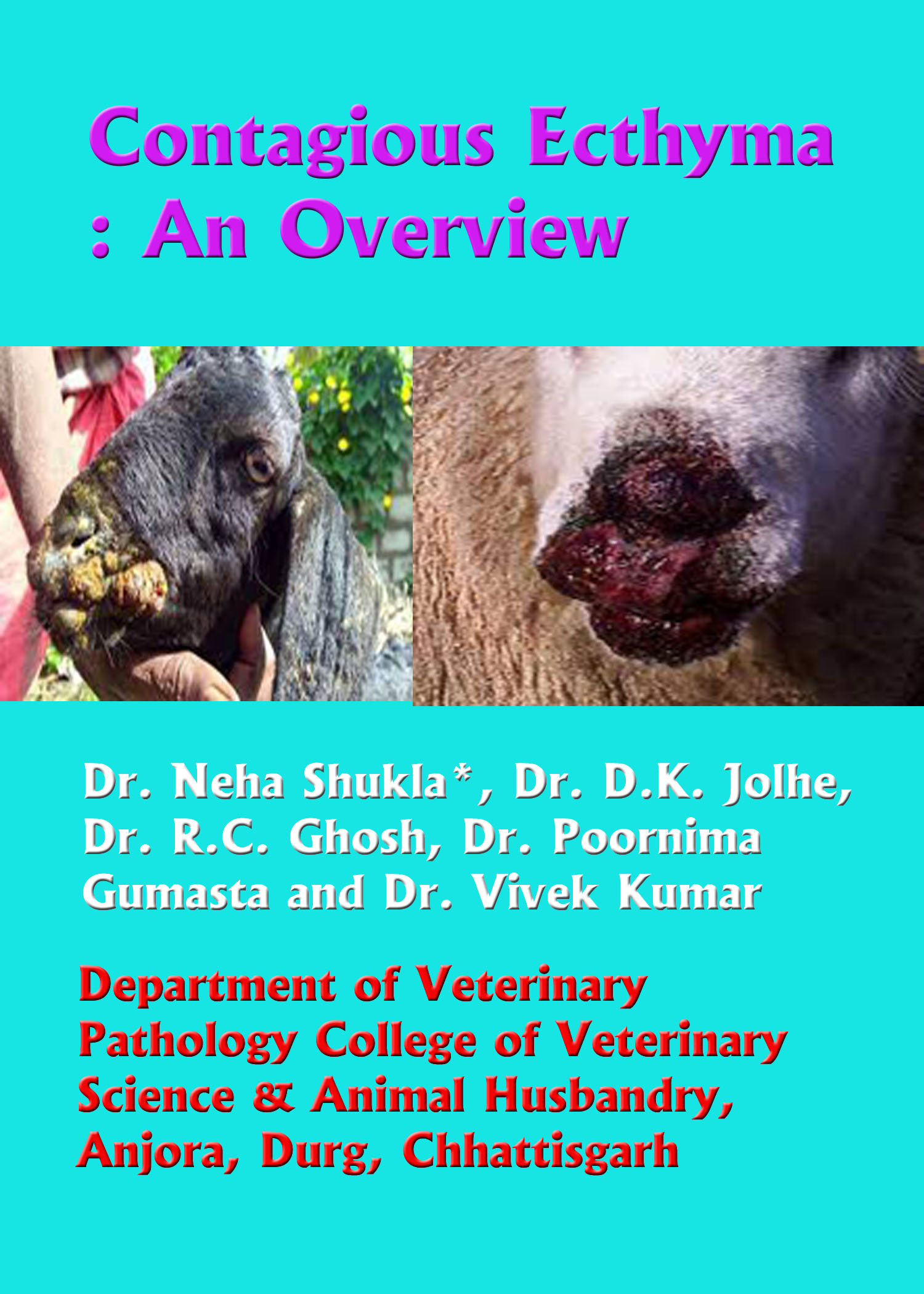Contagious ecthyma: an overview
Dr. Neha Shukla*, Dr. D.K. Jolhe, Dr. R.C. Ghosh, Dr. Poornima Gumasta and
Dr. Vivek Kumar
Department of Veterinary Pathology
College of Veterinary Science & Animal Husbandry, Anjora, Durg, Chhattisgarh
*Corresponding author: Dr. Neha Shukla, PhD scholar, Email ID: neha94255@gmail.com
Introduction
Contagious ecthyma is a highly contagious skin disease of goats and sheep. This disease is also known as sore mouth, scabby mouth or orf. It is caused by a Parapoxvirus. The disease has worldwide distribution and is widely prevalent in India. Several outbreaks occur throughout the year but mostly seen in spring and summer. All age groups are susceptible to the disease and it is more common in goats.
Spread
The disease is spread via direct contact with an infected animal or indirectly from a contaminated environment (equipment, feed troughs, bedding). The virus enters in the body through broken or damaged skin. This virus is capable of surviving at room temperature for many years.
Symptoms in animals
- Blister-like lesions typically develop on the mouth, muzzle, lips and oral mucosa
- Later on these blisters undergo fissuring and become crusty scabs which are painful to touch
- Blisters can also be seen on other parts of the body including face, ears, teats, feet (coronary band), vulva and scrotum
- Animal may refuse to eat due to painful lesions in and around the mouth.
- Lesion on the feet causes lameness in animals
- Secondary bacterial infections may invade teat lesions resulting in mastitis
- Death from this disease is rare
Immunity
Once infected, immunity to the disease is not life-long. Immunity is reported to last approximately 1 year. Reinfection after this time is possible, although the disease is less severe.
Diagnosis
Diagnosis is based on symptoms or laboratory examination of the lesion. The presence of large proliferative lesions around the lips and nostrils of animals are characteristic. Virus can be demonstrated by direct electron microscopy of fresh lesions in laboratories.
Prevention
- New animals entering the herd should be quarantined (3-4 weeks) before mixing with other animals on the farm.
- Isolating infected animals may help to prevent the spread of the disease.
- Cleaning and disinfecting pens may also help reduce the contamination in the environment. Unfortunately, once the virus has entered a herd, it is difficult to eradicate.
- The virus is very hardy, which makes it difficult to control. It can survive for months to years in cool, dry environments; but is destroyed by high and very low temperatures.
Spread in human
Contagious ecthyma is a zoonotic disease. Humans may get infection due to direct contact with infected animals. If exposed, humans can develop the lesion(s) in 3-7days. Blister like lesions typically seen on a finger, hand or other exposed part of the body. The lesion may be painful. If you experience more severe pain, fever, or notice that the sore is becoming larger or spreading, you should see your doctor. Any person handling an affected animal should wear gloves. Hands should be washed with soap and water frequently.


